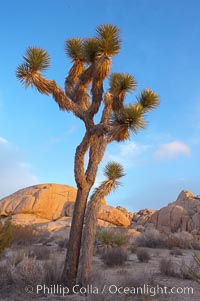
Joshua tree at sunrise. Joshua trees are found in the Mojave desert region of Joshua Tree National Park.
Species: Joshua tree, Yucca brevifolia
Location: Joshua Tree National Park, California
Image ID: 20139
Species: Joshua tree, Yucca brevifolia
Location: Joshua Tree National Park, California
Image ID: 20139
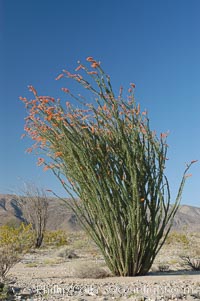
Ocotillo ablaze with springtime flowers. Ocotillo is a dramatic succulent, often confused with cactus, that is common throughout the desert regions of American southwest.
Species: Ocotillo, Fouquieria splendens
Location: Joshua Tree National Park, California
Image ID: 09161
Species: Ocotillo, Fouquieria splendens
Location: Joshua Tree National Park, California
Image ID: 09161

Lonely road, Death Valley.
Location: Badwater, Death Valley National Park, California
Image ID: 25252
Location: Badwater, Death Valley National Park, California
Image ID: 25252
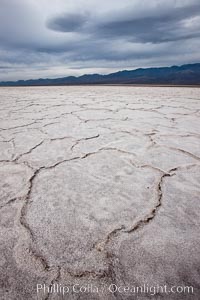
Salt polygons. After winter flooding, the salt on the Badwater Basin playa dries into geometric polygonal shapes.
Location: Badwater, Death Valley National Park, California
Image ID: 25254
Location: Badwater, Death Valley National Park, California
Image ID: 25254
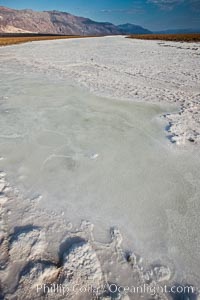
A river of salt flows across Death Valley, toward the lowest point in the United States at Badwater.
Location: Badwater, Death Valley National Park, California
Image ID: 25260
Location: Badwater, Death Valley National Park, California
Image ID: 25260
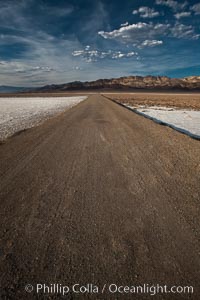
West Side Road cuts across the Badwater Basin.
Location: Badwater, Death Valley National Park, California
Image ID: 25261
Location: Badwater, Death Valley National Park, California
Image ID: 25261
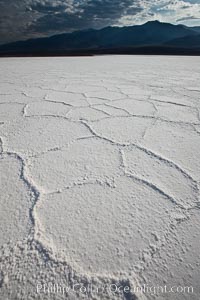
Salt polygons. After winter flooding, the salt on the Badwater Basin playa dries into geometric polygonal shapes.
Location: Badwater, Death Valley National Park, California
Image ID: 25262
Location: Badwater, Death Valley National Park, California
Image ID: 25262
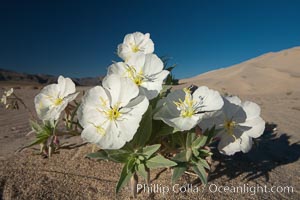
Eureka Valley Dune Evening Primrose. A federally endangered plant, Oenothera californica eurekensis is a perennial herb that produces white flowers from April to June. These flowers turn red as they age. The Eureka Dunes evening-primrose is found only in the southern portion of Eureka Valley Sand Dunes system in Indigo County, California.
Species: Eureka valley dune evening primrose, Oenothera californica eurekensis, Oenothera deltoides
Location: Eureka Dunes, Death Valley National Park, California
Image ID: 25267
Species: Eureka valley dune evening primrose, Oenothera californica eurekensis, Oenothera deltoides
Location: Eureka Dunes, Death Valley National Park, California
Image ID: 25267
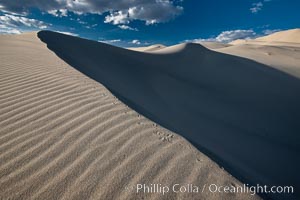
Eureka Dunes. The Eureka Valley Sand Dunes are California's tallest sand dunes, and one of the tallest in the United States. Rising 680' above the floor of the Eureka Valley, the Eureka sand dunes are home to several endangered species, as well as "singing sand" that makes strange sounds when it shifts. Located in the remote northern portion of Death Valley National Park, the Eureka Dunes see very few visitors.
Location: Eureka Dunes, Death Valley National Park, California
Image ID: 25274
Location: Eureka Dunes, Death Valley National Park, California
Image ID: 25274
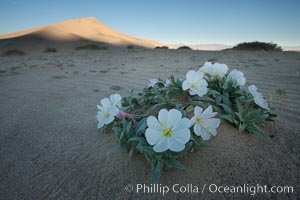
Eureka Valley Dune Evening Primrose. A federally endangered plant, Oenothera californica eurekensis is a perennial herb that produces white flowers from April to June. These flowers turn red as they age. The Eureka Dunes evening-primrose is found only in the southern portion of Eureka Valley Sand Dunes system in Indigo County, California.
Species: Eureka valley dune evening primrose, Oenothera californica eurekensis, Oenothera deltoides
Location: Eureka Dunes, Death Valley National Park, California
Image ID: 25343
Species: Eureka valley dune evening primrose, Oenothera californica eurekensis, Oenothera deltoides
Location: Eureka Dunes, Death Valley National Park, California
Image ID: 25343
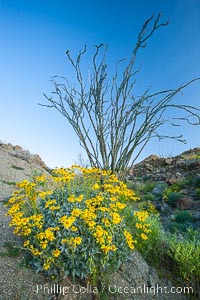
Brittlebush, ocotillo and various cacti and wildflowers color the sides of Glorietta Canyon. Heavy winter rains led to a historic springtime bloom in 2005, carpeting the entire desert in vegetation and color for months.
Species: Brittlebush, Encelia farinosa, Fouquieria splendens
Location: Anza-Borrego Desert State Park, Borrego Springs, California
Image ID: 10896
Species: Brittlebush, Encelia farinosa, Fouquieria splendens
Location: Anza-Borrego Desert State Park, Borrego Springs, California
Image ID: 10896
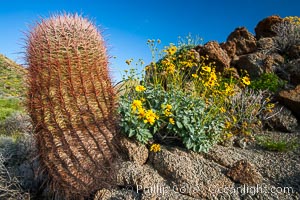
Barrel cactus, brittlebush and wildflowers color the sides of Glorietta Canyon. Heavy winter rains led to a historic springtime bloom in 2005, carpeting the entire desert in vegetation and color for months.
Species: Red barrel cactus, Encelia farinosa, Ferocactus cylindraceus
Location: Anza-Borrego Desert State Park, Borrego Springs, California
Image ID: 10899
Species: Red barrel cactus, Encelia farinosa, Ferocactus cylindraceus
Location: Anza-Borrego Desert State Park, Borrego Springs, California
Image ID: 10899
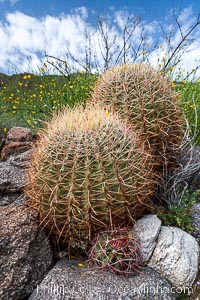
Barrel cactus, Glorietta Canyon. Heavy winter rains led to a historic springtime bloom in 2005, carpeting the entire desert in vegetation and color for months.
Species: Red barrel cactus, Ferocactus cylindraceus
Location: Anza-Borrego Desert State Park, Borrego Springs, California
Image ID: 10906
Species: Red barrel cactus, Ferocactus cylindraceus
Location: Anza-Borrego Desert State Park, Borrego Springs, California
Image ID: 10906
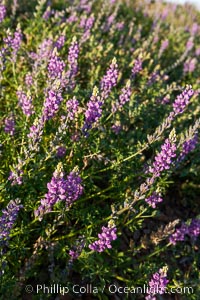
Lupine color the sides of the Borrego Valley in spring. Heavy winter rains led to a historic springtime bloom in 2005, carpeting the entire desert in vegetation and color for months.
Species: Arizona lupine, Lupinus arizonicus
Location: Anza-Borrego Desert State Park, Borrego Springs, California
Image ID: 10969
Species: Arizona lupine, Lupinus arizonicus
Location: Anza-Borrego Desert State Park, Borrego Springs, California
Image ID: 10969
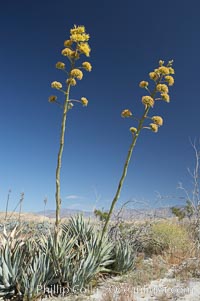
Desert agave, also known as the Century Plant, blooms in spring in Anza-Borrego Desert State Park. Desert agave is the only agave species to be found on the rocky slopes and flats bordering the Coachella Valley. It occurs over a wide range of elevations from 500 to over 4,000. It is called century plant in reference to the amount of time it takes it to bloom. This can be anywhere from 5 to 20 years. They send up towering flower stalks that can approach 15 feet in height. Sending up this tremendous display attracts a variety of pollinators including bats, hummingbirds, bees, moths and other insects and nectar-eating birds.
Species: Desert agave, Agave deserti
Image ID: 11550
Species: Desert agave, Agave deserti
Image ID: 11550
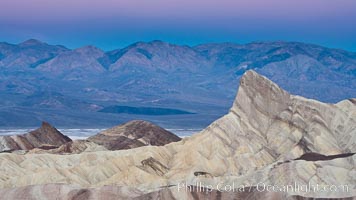
Zabriskie Point, sunrise. Manly Beacon rises in the center of an eroded, curiously banded area of sedimentary rock, with the Panamint Mountains visible in the distance.
Location: Zabriskie Point, Death Valley National Park, California
Image ID: 15585
Location: Zabriskie Point, Death Valley National Park, California
Image ID: 15585
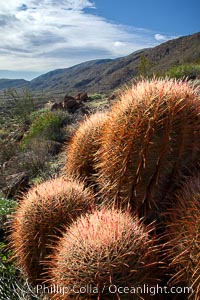
Red barrel cactus, Glorietta Canyon, Anza-Borrego Desert State Park.
Species: Red barrel cactus, Ferocactus cylindraceus
Location: Anza-Borrego Desert State Park, Borrego Springs, California
Image ID: 24302
Species: Red barrel cactus, Ferocactus cylindraceus
Location: Anza-Borrego Desert State Park, Borrego Springs, California
Image ID: 24302
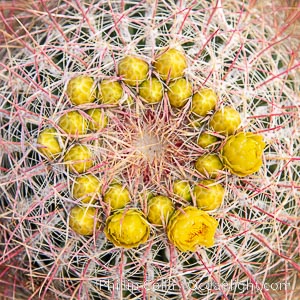
Red barrel flower bloom, cactus detail, spines and flower on top of the cactus, Glorietta Canyon, Anza-Borrego Desert State Park.
Species: Red barrel cactus, Ferocactus cylindraceus
Location: Anza-Borrego Desert State Park, Borrego Springs, California
Image ID: 24303
Species: Red barrel cactus, Ferocactus cylindraceus
Location: Anza-Borrego Desert State Park, Borrego Springs, California
Image ID: 24303
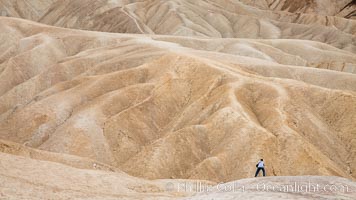
Eroded hillsides near Zabriskie Point and Gower Wash.
Location: Zabriskie Point, Death Valley National Park, California
Image ID: 25255
Location: Zabriskie Point, Death Valley National Park, California
Image ID: 25255
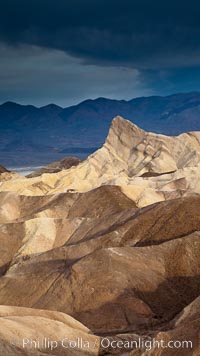
Sunrise at Zabriskie Point, Manly Beacon is lit by the morning sun while dark clouds lie on the horizon.
Location: Zabriskie Point, Death Valley National Park, California
Image ID: 25256
Location: Zabriskie Point, Death Valley National Park, California
Image ID: 25256
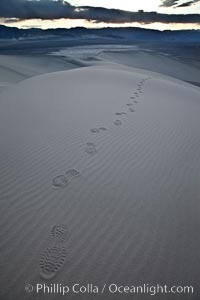
Footprints in the sand, Eureka Dunes. The Eureka Valley Sand Dunes are California's tallest sand dunes, and one of the tallest in the United States. Rising 680' above the floor of the Eureka Valley, the Eureka sand dunes are home to several endangered species, as well as "singing sand" that makes strange sounds when it shifts. Located in the remote northern portion of Death Valley National Park, the Eureka Dunes see very few visitors.
Location: Eureka Dunes, Death Valley National Park, California
Image ID: 25271
Location: Eureka Dunes, Death Valley National Park, California
Image ID: 25271
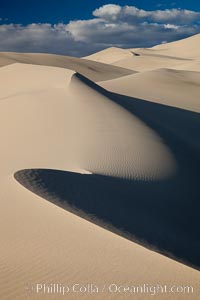
Eureka Dunes. The Eureka Valley Sand Dunes are California's tallest sand dunes, and one of the tallest in the United States. Rising 680' above the floor of the Eureka Valley, the Eureka sand dunes are home to several endangered species, as well as "singing sand" that makes strange sounds when it shifts. Located in the remote northern portion of Death Valley National Park, the Eureka Dunes see very few visitors.
Location: Eureka Dunes, Death Valley National Park, California
Image ID: 25272
Location: Eureka Dunes, Death Valley National Park, California
Image ID: 25272
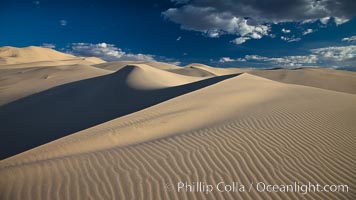
Eureka Dunes. The Eureka Valley Sand Dunes are California's tallest sand dunes, and one of the tallest in the United States. Rising 680' above the floor of the Eureka Valley, the Eureka sand dunes are home to several endangered species, as well as "singing sand" that makes strange sounds when it shifts. Located in the remote northern portion of Death Valley National Park, the Eureka Dunes see very few visitors.
Location: Eureka Dunes, Death Valley National Park, California
Image ID: 25273
Location: Eureka Dunes, Death Valley National Park, California
Image ID: 25273
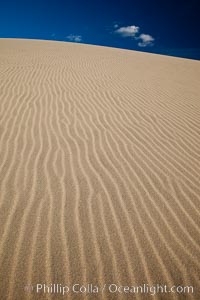
Eureka Dunes. The Eureka Valley Sand Dunes are California's tallest sand dunes, and one of the tallest in the United States. Rising 680' above the floor of the Eureka Valley, the Eureka sand dunes are home to several endangered species, as well as "singing sand" that makes strange sounds when it shifts. Located in the remote northern portion of Death Valley National Park, the Eureka Dunes see very few visitors.
Location: Eureka Dunes, Death Valley National Park, California
Image ID: 25275
Location: Eureka Dunes, Death Valley National Park, California
Image ID: 25275
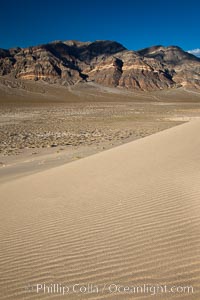
Eureka Dunes. The Eureka Valley Sand Dunes are California's tallest sand dunes, and one of the tallest in the United States. Rising 680' above the floor of the Eureka Valley, the Eureka sand dunes are home to several endangered species, as well as "singing sand" that makes strange sounds when it shifts. Located in the remote northern portion of Death Valley National Park, the Eureka Dunes see very few visitors.
Location: Eureka Dunes, Death Valley National Park, California
Image ID: 25276
Location: Eureka Dunes, Death Valley National Park, California
Image ID: 25276
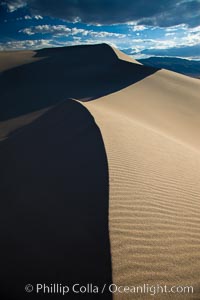
Eureka Dunes. The Eureka Valley Sand Dunes are California's tallest sand dunes, and one of the tallest in the United States. Rising 680' above the floor of the Eureka Valley, the Eureka sand dunes are home to several endangered species, as well as "singing sand" that makes strange sounds when it shifts. Located in the remote northern portion of Death Valley National Park, the Eureka Dunes see very few visitors.
Location: Eureka Dunes, Death Valley National Park, California
Image ID: 25277
Location: Eureka Dunes, Death Valley National Park, California
Image ID: 25277
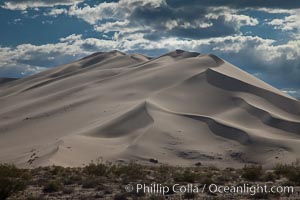
Eureka Valley Sand Dunes. The Eureka Dunes are California's tallest sand dunes, and one of the tallest in the United States. Rising 680' above the floor of the Eureka Valley, the Eureka sand dunes are home to several endangered species, as well as "singing sand" that makes strange sounds when it shifts.
Location: Eureka Dunes, Death Valley National Park, California
Image ID: 25279
Location: Eureka Dunes, Death Valley National Park, California
Image ID: 25279
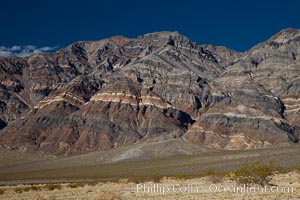
Last Chance Mountains rise above the Eureka Valley.
Location: Eureka Valley, Death Valley National Park, California
Image ID: 25280
Location: Eureka Valley, Death Valley National Park, California
Image ID: 25280
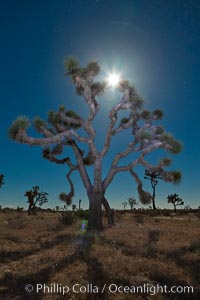
Joshua tree, moonlit night. The Joshua Tree is a species of yucca common in the lower Colorado desert and upper Mojave desert ecosystems.
Species: Joshua tree, Yucca brevifolia
Location: Joshua Tree National Park, California
Image ID: 26721
Species: Joshua tree, Yucca brevifolia
Location: Joshua Tree National Park, California
Image ID: 26721
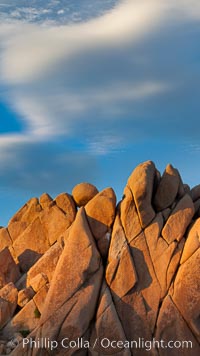
Boulders and sunset in Joshua Tree National Park. The warm sunlight gently lights unusual boulder formations at Jumbo Rocks in Joshua Tree National Park, California.
Location: Joshua Tree National Park, California
Image ID: 26743
Location: Joshua Tree National Park, California
Image ID: 26743